Manchester City: The Physical Decline Of The World’s Best Football Team
In the increasing demands of modern football, few buzzwords are more prominent or important than intensity. The heightened sense of fitness in each individual footballer has meant the midfield has become even more pivotal than it was in the past, and failure to add intensity to the centre of the pitch, especially at the highest levels, quite often means a team will struggle immensely.
Manchester City’s recent capitulation has paid homage to this fact. The on-ball quality of the midfielders in City’s setup is undeniable, but their physical abilities off the ball leave a lot to be desired. It’s not a case of the City player’s not being bothered to make the high-intensity sprints; it’s simply a case that they are unable to do it.
The Decline Of Manchester City:
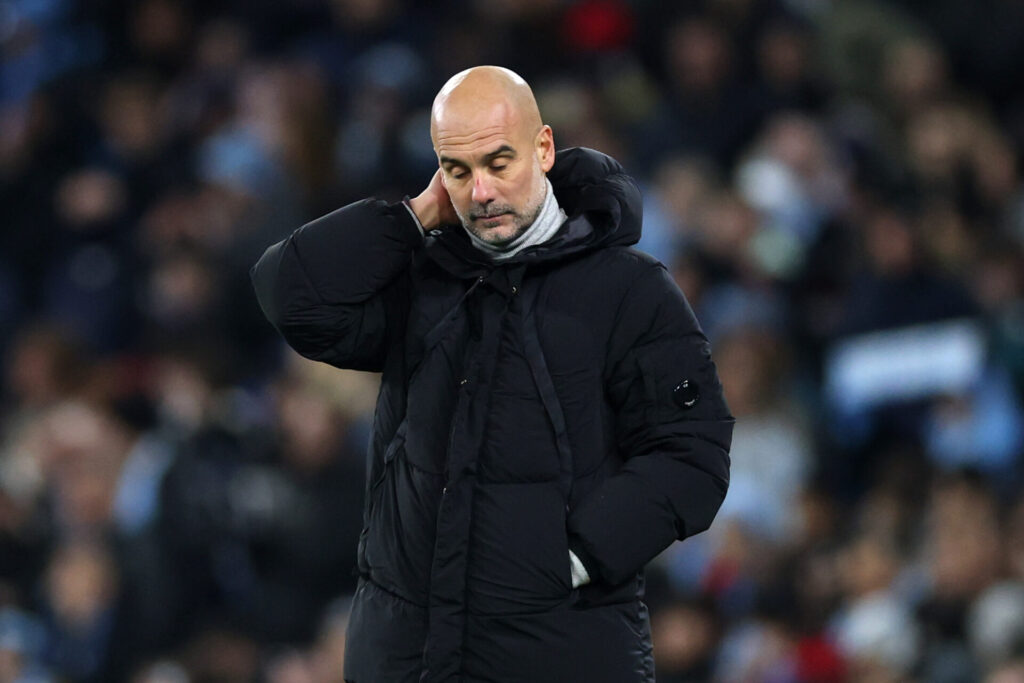
The decline has been coming for City, even within their period of complete and utter dominance in recent campaigns. The recruitment has left a lot to be desired at the Etihad Stadium, and it has left Pep Guardiola in a state of stress at the moment, as he is struggling to find a collection of players on the pitch that allows his team to perform in the manner he would like.
In regards to Guardiola, he does seem to be feeling the affects of his team’s struggles. The former Barcelona coach previously took a break from football in the past due to the impact it had on his life. Jurgen Klopp’s departure from football has showcased the mental implications of managing the biggest clubs on the planet and striving for these successes year after year, and Guardiola, despite signing that new deal last week, is likely to follow his former German rival to the retirement bay in the coming months.
Without Rodri, and the most important thing to highlight here is that the capitulation, while intensified by the absence of the Spaniard, is not solely due to the fact he is not in the team; City looks like an empty shell of the team that struck fear into every team in the land over the last six years. Guardiola’s insistence on continuing to play a high-intensity system with a team that cannot maintain the demands of that system physically is one of the key reasons why Manchester City continue to get torn apart on a weekly basis at this moment in time, and failure to move away from that will see them drop further down the table and out of the title race currently dominated by Arne Slot’s Liverpool.
Lost In Transition:
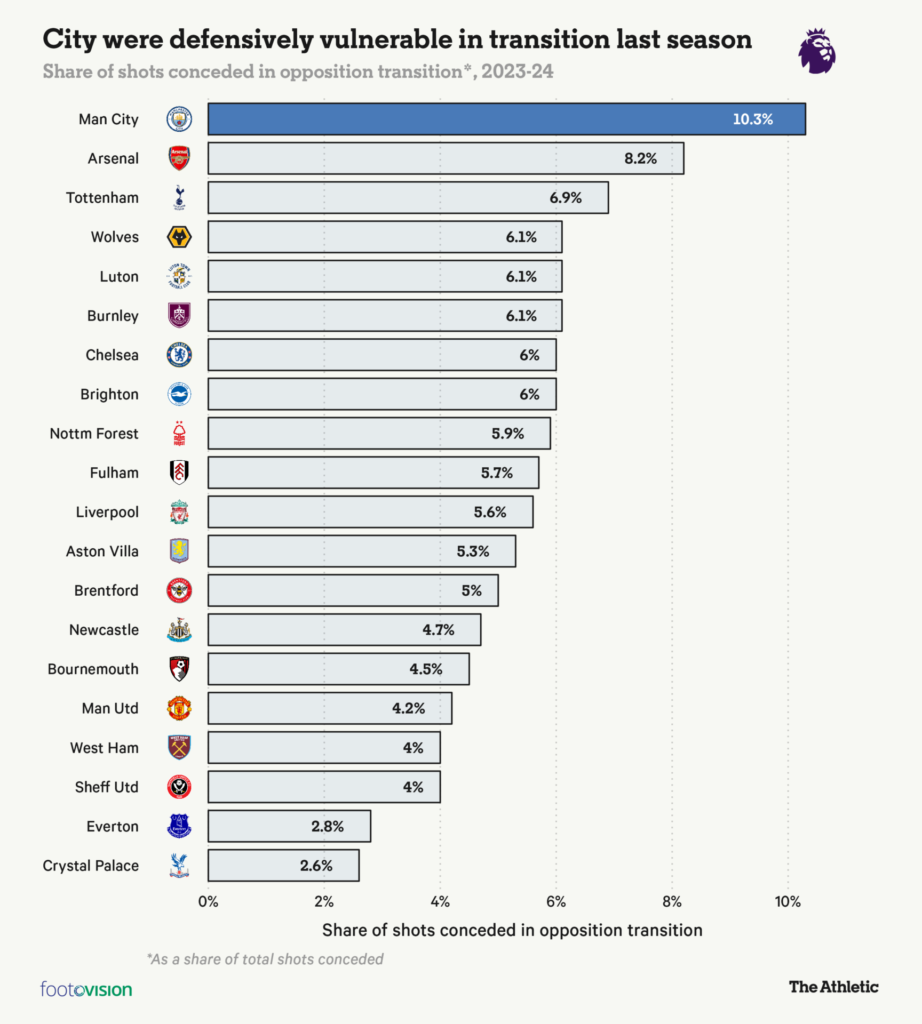
Any team with significant pace and power in central areas, along with an ability to know when and how to transition, can cause this team trouble. Last season it was visible at the beginning of the campaign in games without Rodri, particularly in the defeat away from home against Wolves and especially in both games against Chelsea, but the signings of 34-year-old Ilkay Gundogan as well as the continued decline of Mateo Kovacic and the ageing Kevin De Bruyne have meant the midfield that could once go toe to toe with the best sides on the planet can no longer compete on a consistent basis anywhere near that.
City do not often make sentimental signings, but the return of Gundogan was exactly that. Rodri had no natural successor or competition within the team coming into the campaign, and failure to address that issue or sign someone with an ability to cover large spaces has left the team in a bigger crisis than they have faced in over a decade.
Kyle Walker’s physical decline is also a major factor in the current issues plaguing the team. Guardiola has not suddenly turned into a bad manager, but he no longer has the tools available to him to carry out the system he has drilled into the team and the club since he came in. The fact Walker’s recovery pace is not there anymore means that in isolation, that Manchester City backline lacks pace by all accounts, and it means City are not only vulnerable in central areas by virtue of sides breaking through their midfield; they’re also vulnerable from balls over the top or direct runs at the back four by players with a yard of pace, as Timo Werner showcased last week.
Intensity within the modern game allows teams to press high while still leaving spaces either behind their defence or behind their midfield. The players ability to cover large spaces means the gaps can be filled in and allows them to play their high-risk style of play and suffocate teams within their own half. Guardiola’s philosophy is embedded in that way of playing. It will be incredibly difficult for the former Barcelona manager to step away from this style in the coming weeks, even though it may mean that City can look more solid defensively and work towards conceding fewer goals than they currently are.
Pep Turns To A Mid Block?
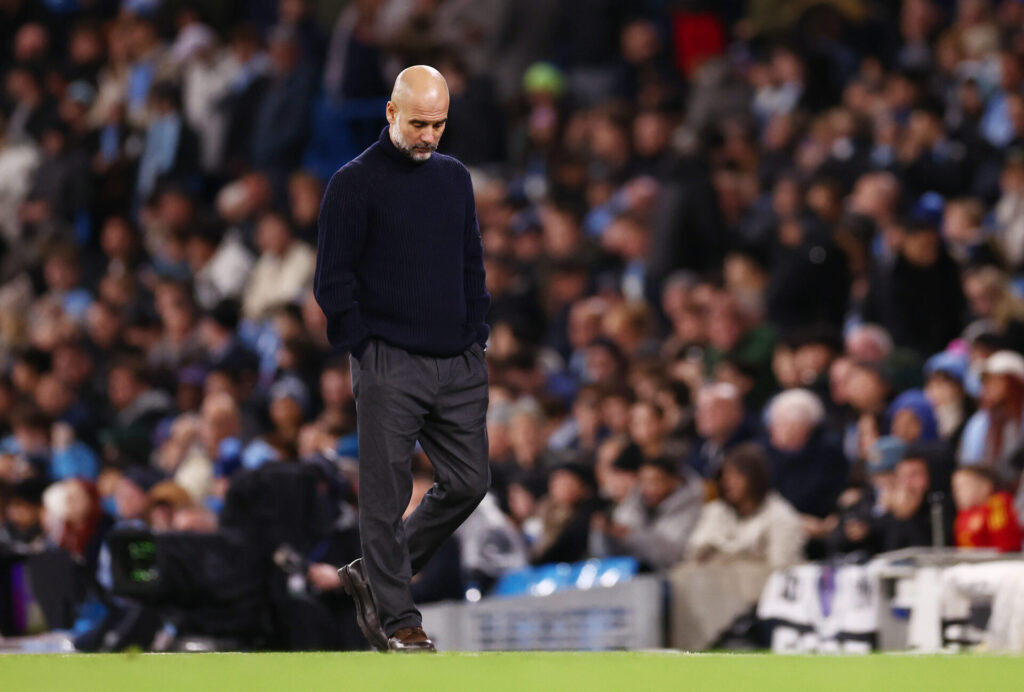
Arteta has shown a tendency to lean towards a defensive setup in recent months during Arsenal’s injury issues, but the idea that Guardiola could turn around tomorrow and coach a low block seems an impossible concept to imagine. That isn’t to suggest the Spanish manager cannot coach a Mourinho-esque deep block or a simple mid-block with a more passive approach to pressing, but more so that he won’t, but the general consensus is that he should.
In their last three games, City have conceded 11 goals. Sporting and Spurs hit them for four each, while Tuesday’s incredible comeback from Feyenoord saw the Blue’s become the first side in Champions League history to have a 3-goal lead going into the 76th minute and not win the game. It’s a far cry from the side of last season and a million miles away from the Guardiola side that became the first side to win the treble in English football since Manchester United in 1999.
Every top side in Europe that competes to a high level has that high level of intensity in central areas. Manchester United’s falldown last season under Erik ten Hag stemmed from the physical decline of Casemiro, with other contributing factors of course, but by enlargement, Ten Hag’s system required a huge amount of physical exertion, which unfortunately for the Dutch manager the midfield could not provide.
Physicality, to quote Fred, is what carries the piano for the ball players to make their art. Without that level of intensity and ground covering in central areas, players like Mesut Ozil, David Silva, and currently Bernardo Silva cannot play the game they’d like to play.
Build A Wonderwall?
How does City fix it? Adapt. Be aware of the qualities and attributes of the players at your disposal and make a starting base in regards to that until January, and look to build a more physically capable midfield during the window to go hell for leather in the second half of the season. Rodri’s absence aside, it remains a midfield that needs a rebuild, and moreover, it remains a squad in need of a rebuild over the next three transfer windows.
City need change, and fast. A trip to Anfield on Sunday against a red-hot Liverpool team who thrives on the counter and transition could put Guardiola’s side to a sword they’re not used to being face-to-face with, as they currently stare down the barrel of a fifth defeat in six games for the first time in his time at City and in his entire career as a manager. It’s arguably the worst game they could have to try and regain their confidence, and if Pep fails to change his tactics against Arne Slot’s side, it could be a dark day in the dugout.


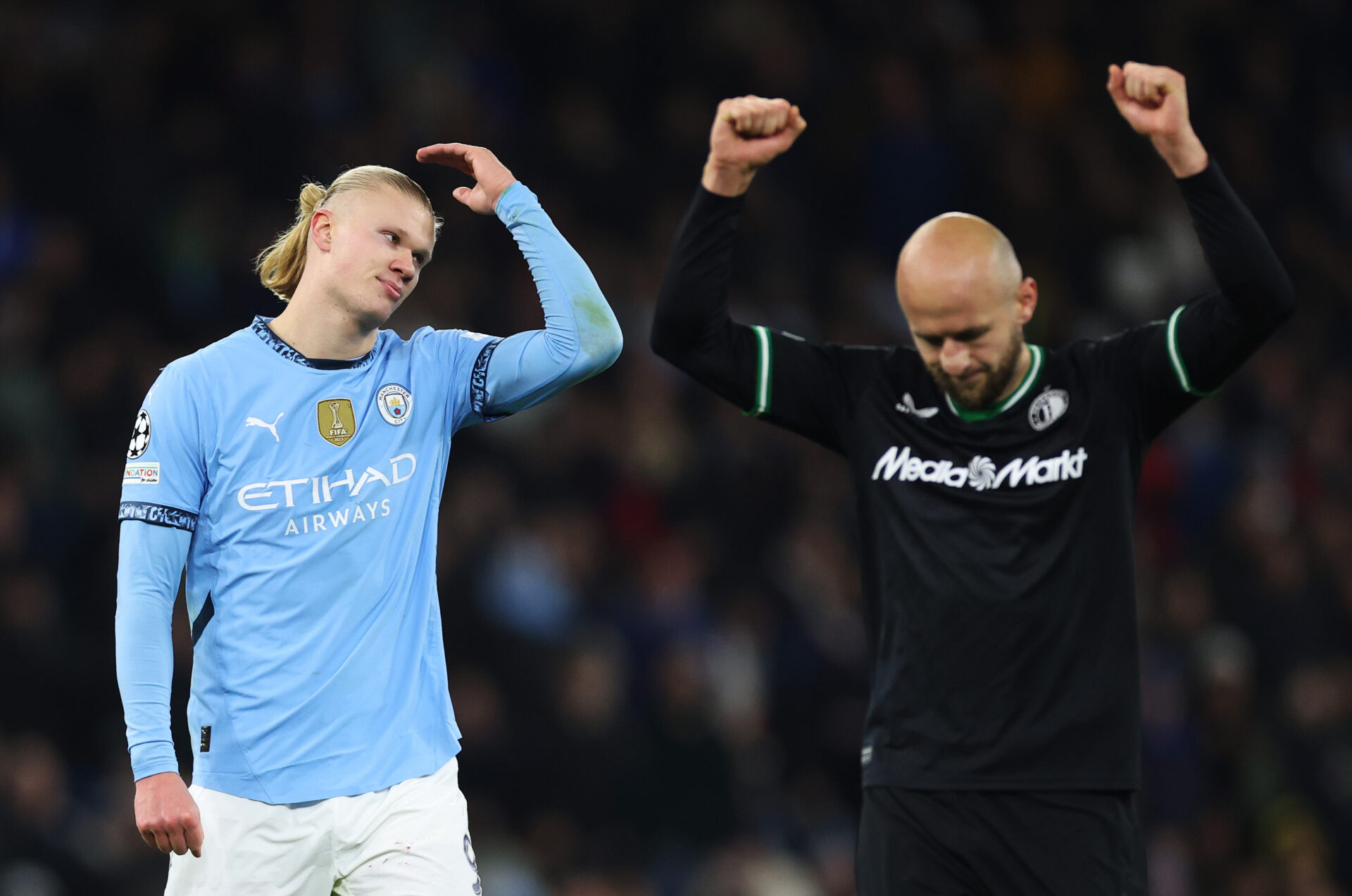

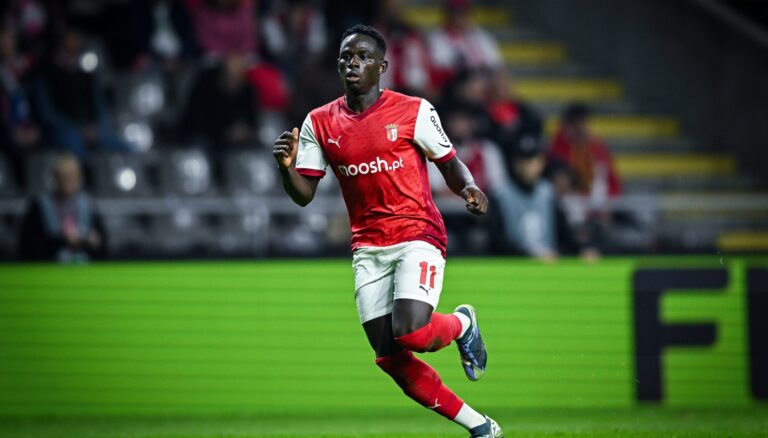
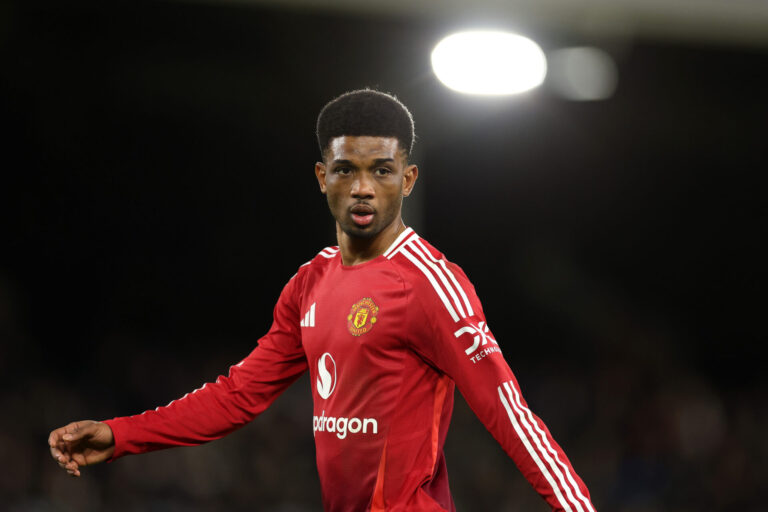
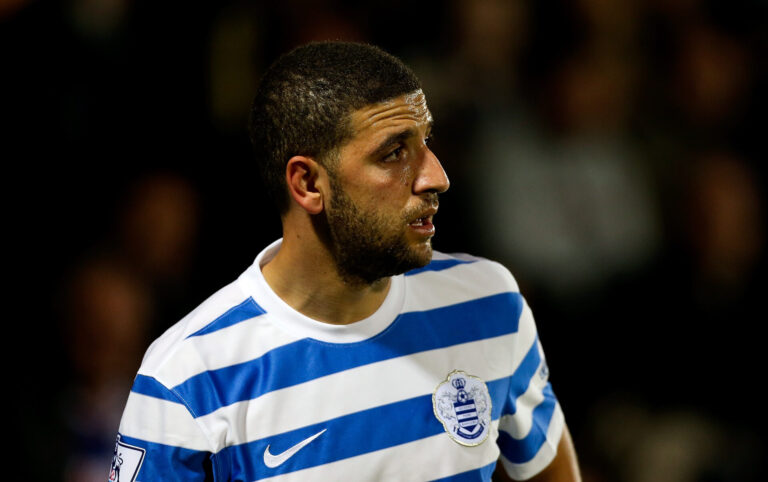
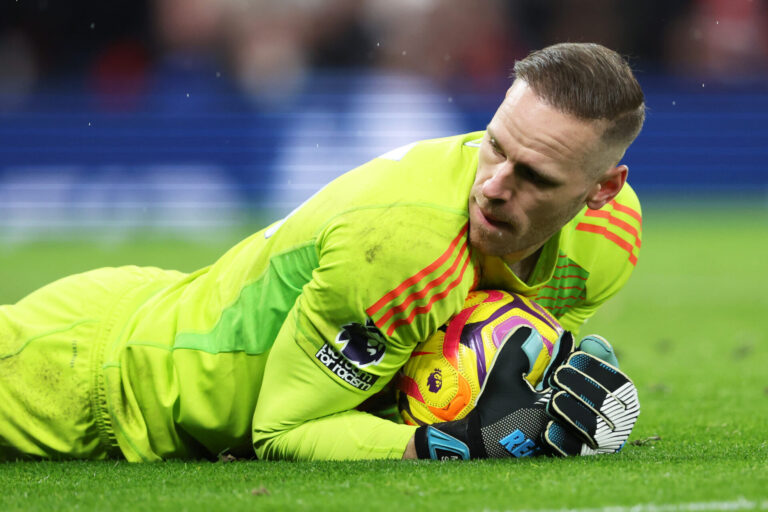
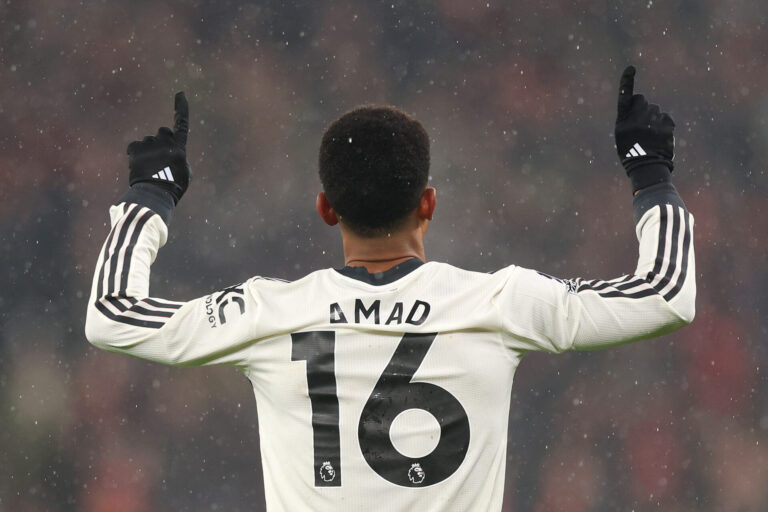
One Comment